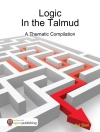Goes to the heart of contemporary arguments about the ‘primitive’ and the ‘modern’ minds, and draws new social, anthropological, and ethnographic conclusions about the nature of ancient societies.
How did ancient peoples—those living before written records—think? Were their thinking patterns fundamentally different from ours today? Researchers over the years have certainly believed so. Along with the Aborigines of Australia, the indigenous San people of southern Africa—among the last hunter-gatherer societies on Earth—became iconic representatives of all our distant ancestors and were viewed as either irrational fantasists or childlike, highly spiritual conservationists.Since the 1960s a new wave of research among the San and their world-famous rock art has overturned these misconceived ideas. Here, the great authority David Lewis-Williams and his colleague Sam Challis reveal how analysis of the rock paintings and engravings can be made to yield vital insights into San beliefs and ways of thought. This is possible because we possess comprehensive transcriptions, made in the nineteenth century, of interviews with San informants who were shown copies of the art and gave their interpretations of it. Using the analogy of the Rosetta Stone, the authors move back and forth between these San texts and the rock art, teasing out the subtle meanings behind both.
The picture that emerges is very different from past analysis: this art is not a naïve narrative of daily life but rather is imbued with power and religious depth.
Giới thiệu về tác giả
Sam Challis is a rock art specialist at the Rock Art Research Institute, University of the Witwatersrand, Johannesburg.
Mua cuốn sách điện tử này và nhận thêm 1 cuốn MIỄN PHÍ!
Ngôn ngữ Anh ● định dạng EPUB ● Trang 224 ● ISBN 9780500770467 ● Kích thước tập tin 20.8 MB ● Nhà xuất bản Thames & Hudson ● Quốc gia US ● Được phát hành 2011 ● Có thể tải xuống 24 tháng ● Tiền tệ EUR ● TÔI 7469475 ● Sao chép bảo vệ Adobe DRM
Yêu cầu trình đọc ebook có khả năng DRM












